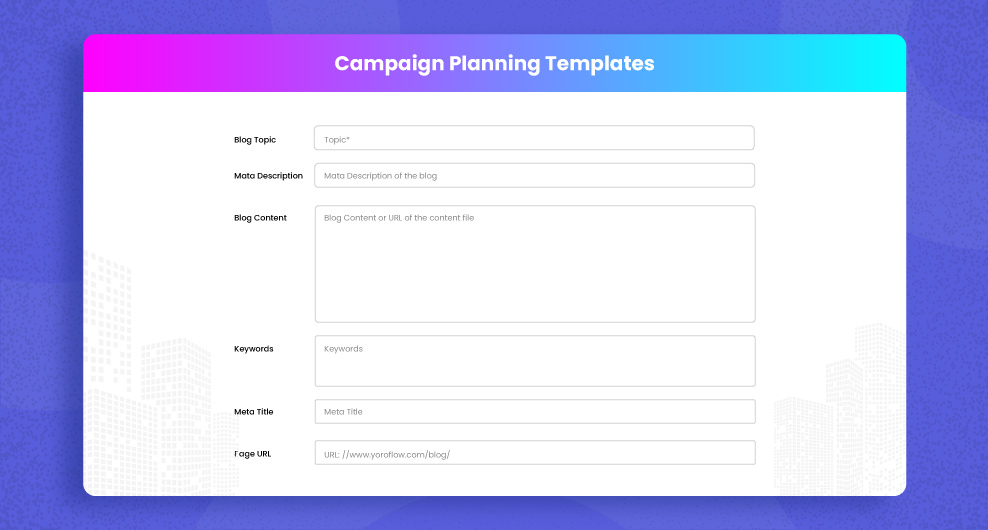Table of Contents
In the dynamic landscape of digital marketing, the success of any campaign lies in its ability to resonate with the target audience and leave a lasting impact. Creative campaign management plays a pivotal role in achieving this goal, requiring a strategic blend of art and science. In this blog, we will explore the best practices for delivering a campaign with maximum impact.
What is campaign management?
Campaign management indicates the planning, execution, tracking, and analysis of marketing initiatives or campaigns aimed at achieving specific business goals.

This process involves coordinating various elements, such as advertising, promotions, public relations, and digital marketing, to deliver a cohesive and targeted message to a specific audience.
Key aspects of campaign management include:
- Strategic Planning: Defining the goals and objectives of the campaign, identifying the target audience, and establishing the key messages.
- Resource Allocation: Allocating budgets, human resources, and other assets required for the campaign’s implementation.

- Creative Development: Creating compelling and relevant content, including visuals, copy, and multimedia elements, to effectively communicate the campaign’s message.
- Channel Selection: Choosing the most appropriate channels for reaching the target audience. This may include digital channels (social media, email, online advertising), traditional media (TV, radio, print), or a combination of both.
- Timing and Frequency: Determining the optimal timing for launching the campaign and establishing a consistent frequency for communication to maintain audience engagement.
- Execution: Implementing the campaign according to the plan, whether it involves online or offline activities. This phase also includes monitoring and managing the campaign in real-time.
- Measurement and Analysis: Evaluating the campaign’s performance using key performance indicators (KPIs) and analytics tools. This step helps in assessing the impact of the campaign and understanding areas for improvement.
- Optimization: Based on the analysis, making adjustments to the campaign strategy for continuous improvement. This may involve refining messaging, adjusting the targeting, or reallocating resources to enhance effectiveness.
Campaign management is crucial for ensuring that marketing efforts are coordinated, aligned with business objectives, and capable of delivering maximum impact. It requires a combination of strategic thinking, creativity, and data-driven decision-making to achieve success in a competitive and dynamic marketing environment.
Best practices for delivering a campaign with maximum impact
Understanding Your Audience
Before diving into the creative process, it’s essential to have a deep understanding of your audience. Conduct thorough market research, segment your audience, and create detailed buyer personas. Tailor your campaign messaging to align with the preferences and needs of your target demographic.
Setting Clear Objectives
Define SMART (Specific, Measurable, Achievable, Relevant, Time-bound) goals for your campaign. Ensure that these objectives are in line with your overall marketing strategy. Establish key performance indicators (KPIs) that will serve as benchmarks for success.
Crafting Compelling Creative
Visual and written content are the pillars of any successful campaign. Ensure consistency in branding across all elements. Utilize storytelling techniques to create a narrative that engages and resonates with your audience.
Choosing the Right Channels
Implement a multi-channel approach to maximize reach. Stay abreast of social media platforms and emerging trends. Incorporate email marketing and other direct channels to diversify your campaign’s reach and impact.
Timing and Frequency
Strategic timing can significantly influence a campaign’s success. Consider the optimal times to reach your audience and maintain a consistent frequency of communication. Capitalize on seasonal and trendy opportunities to enhance your campaign’s relevance.
Budgeting and Resource Allocation
Allocate resources based on your campaign goals. Implement cost-efficient strategies without compromising on quality. Regularly monitor and adjust your budget as needed to ensure maximum impact.
Leveraging Influencers and Partnerships
Identify and engage relevant influencers within your industry. Build mutually beneficial partnerships that amplify your campaign’s reach. Collaborate with influencers and partners to create a more powerful and credible message.
Implementing A/B Testing
Optimize your campaign through A/B testing of creative elements. Analyze data and iterate on your strategy based on the insights gained. Embrace a culture of continuous improvement through ongoing testing.
Measuring and Analyzing Results
Utilize analytics tools to gather data-driven insights. Evaluate KPIs to determine the success of your campaign. Extract lessons learned and applied them to future campaigns for continuous refinement.
Addressing Challenges and Adapting
Identify common challenges in campaign management and develop proactive problem-solving strategies. Embrace setbacks as opportunities to learn and adapt. Cultivate a mindset of continuous learning and innovation.
Conclusion
In the ever-evolving landscape of digital marketing, creative campaign management remains a critical driver of success. By understanding your audience, setting clear objectives, crafting compelling creative, choosing the right channels, and leveraging influencers, you can deliver a campaign with maximum impact. Implementing A/B testing, measuring results, and addressing challenges with adaptability will ensure your campaigns stay relevant and effective in an ever-changing marketplace.
Remember, the key to success lies in continuous learning, optimization, and a commitment to delivering unparalleled value to your audience.




